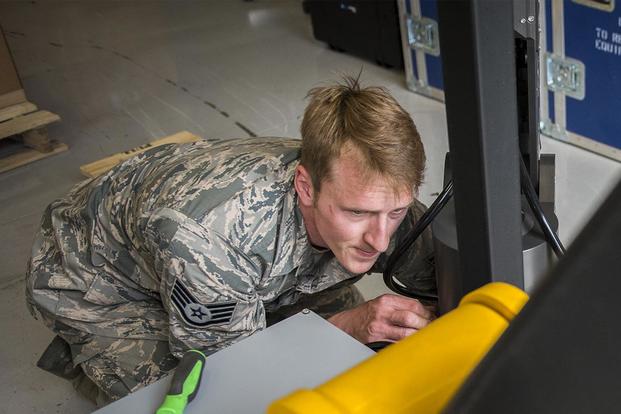EGLIN AIR FORCE BASE, Florida -- Explosive ordnance disposal technicians here are working with a custom-made, next-generation robot that will pick apart bombs and study them.
Brokk -- a Frankenstein's monster of sorts with pieces of high-tech ordnance disposal machinery, as well as large construction demolition mechanics -- replaces 20-year-old "Stewie," the previous EOD robot.
EOD techs haven't had a chance to fully test Brokk's capabilities yet, but anticipate a live bombing exercise in the next few months will put it to work.
But the $1.3 million upgrade has been worth it so far, according to Staff Sgt. Ryan Hoagland of the 96th Civil Engineer Squadron, who said the older robot had him operating more like a mechanic than an EOD technician.
Related content:
- Advanced Data Sharing, Range Expansion on Eglin Test Wing's Agenda
- The Future of EOD: Leaner, Laser-Armed Robots
- Air Force Debates Replacing Depleted Uranium Rounds for A-10
"I don't have to mop up hydraulic fluid right now. I'm not fixing wires that have [overheated] because of the sun or that have deteriorated over the years," among other issues, he said during a tour here. Military.com spoke with Hoagland during a trip accompanying Air Force Secretary Heather Wilson to the base.
The one-of-a-kind, electric-powered Brokk provides smooth extraction with its control arms, operated remotely from a mobile control trailer nearby, Hoagland said.
Some movements can be programmed into Brokk, which weighs around 10,000 pounds. But typically, it takes at least two airmen to operate a controller for each arm, plus another to steer the robot, he said. Technicians will watch a live video feed from cameras fastened to it.
Brokk will allow teams to dismantle bombs -- often live -- after a range test, in which munitions might have penetrated 30 feet or more underground.
EOD techs then collect data from the bomb, providing more information to the weapons tester on how the bomb dropped, struck its target and or detonated.
"Basically, [it's] data to figure out what happened, and why the item didn't perform the way it was supposed to," Hoagland said. "We hope the test goes well. If it doesn't, we then go in there with this and take care of it."
The robot, made by Brokk Inc., was named after the Norse blacksmith "who forged Thor's hammer," according to a base press release last month. Part of its arms were manufactured in conjunction with Kraft Telerobotics.
Hoagland said the service could incorporate a few more capabilities into Brokk in the future, depending on necessity.
Whether that means lasers is unknown.
-- Oriana Pawlyk can be reached at oriana.pawlyk@military.com. Follow her on Twitter at @Oriana0214.










